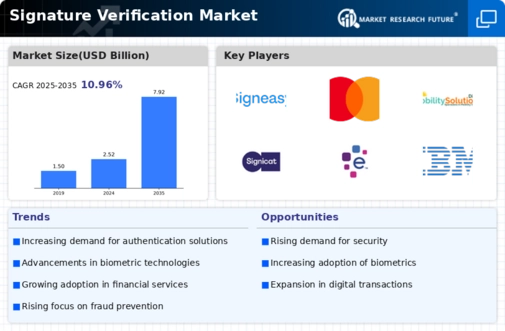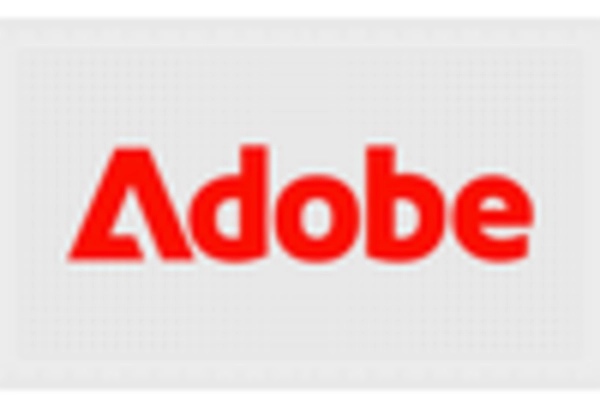Increasing Cybersecurity Threats
The rise in cybersecurity threats has propelled the demand for robust authentication methods, including those in the Signature Verification Market. As organizations face increasing risks from data breaches and identity theft, the need for secure signature verification solutions becomes paramount. According to recent data, the cybersecurity market is projected to reach USD 345 billion by 2026, indicating a growing awareness of security measures. This trend suggests that businesses are likely to invest more in signature verification technologies to safeguard sensitive information and maintain customer trust. Consequently, the Signature Verification Market is expected to experience significant growth as companies seek to enhance their security protocols.
Growth of E-commerce and Online Transactions
The exponential growth of e-commerce and online transactions has significantly influenced the Signature Verification Market. With more consumers opting for online shopping, the need for secure payment methods and transaction verification has become critical. Data suggests that e-commerce sales are expected to surpass USD 6 trillion by 2024, highlighting the increasing reliance on digital transactions. This trend necessitates the implementation of effective signature verification solutions to prevent fraud and ensure secure transactions. As a result, the Signature Verification Market is poised for expansion, driven by the demand for reliable verification methods in the rapidly evolving e-commerce landscape.
Adoption of Digital Transformation Initiatives
The ongoing digital transformation across various sectors is a key driver for the Signature Verification Market. Organizations are increasingly adopting digital solutions to streamline operations and improve customer experiences. This shift is evident in the financial services sector, where digital transactions have surged, necessitating reliable signature verification methods. Reports indicate that the digital transformation market is anticipated to grow to USD 3 trillion by 2025. As businesses transition to digital platforms, the demand for signature verification solutions that ensure authenticity and integrity of digital documents is likely to rise, thereby propelling the growth of the Signature Verification Market.
Regulatory Requirements for Document Authentication
The stringent regulatory requirements for document authentication across various industries are a significant driver for the Signature Verification Market. Governments and regulatory bodies are increasingly mandating secure methods for verifying signatures to combat fraud and ensure compliance. For instance, the financial sector is subject to regulations that require robust identity verification processes. This regulatory landscape is expected to create a sustained demand for signature verification solutions, as organizations strive to meet compliance standards. The Signature Verification Market is likely to benefit from this trend, as businesses invest in technologies that facilitate adherence to regulatory requirements.
Technological Advancements in Signature Verification
Technological advancements in signature verification methods are transforming the Signature Verification Market. Innovations such as biometric authentication, machine learning algorithms, and blockchain technology are enhancing the accuracy and reliability of signature verification processes. These advancements not only improve security but also streamline the verification process, making it more efficient. As organizations seek to leverage these technologies, the market for signature verification solutions is expected to grow. The integration of advanced technologies into signature verification systems may lead to increased adoption rates, further propelling the Signature Verification Market as businesses prioritize secure and efficient verification methods.

















Leave a Comment